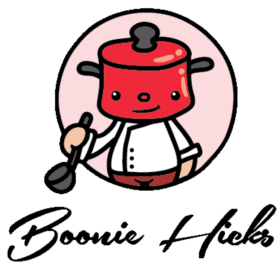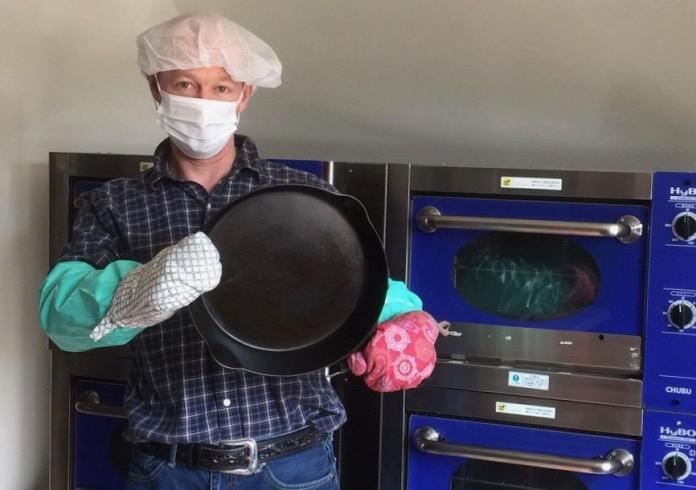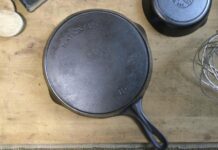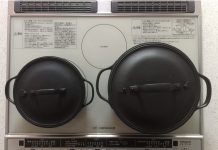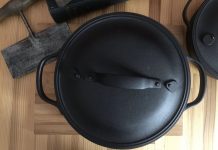Is your cast iron cookware safe? Or should you consider using alternative cookware such as stainless steel? In this article, you can find out the possible health benefits of cast iron. Also, you can learn of the possible dangers of cooking with bare or non-enameled cast iron.
However, if you’re in a hurry here are the highlights
Question: Is cast iron safe?
Answer:
- Some people think iron released from cast iron is a health benefit as iron is needed in our bodies. How important is iron in our bodies? Well, iron is in every cell of our body.
- Needless to say iron is essential. However, others argue, the iron released from cast iron is higher than your RDA and this could pose a health risk.
Is cast iron safe? For thousands of years, humans have cooked on cast iron.
For over 2500 years we have used cast iron as a reliable and sturdy cooking surface. However, it may come to some surprise it wasn’t the Europeans who discovered metal casting. In fact, it was the Chinese who made huge advances in casting techniques.
Europeans in the Iron Age developed different technology just as sheet metal. So early Europeans hammered pots and pans into shape while the Chinese poured iron into molds. This lead to different materials used as cookware between the two continents. If you want to learn more about the history of cookware just click the link to find out more.
Sure humans have used cast iron cookware for a long time but is it your best choice?
Aside from stone, iron is one of the oldest cooking surfaces humans have used. Despite the years of use with little evidence of any health risks, some people are questioning the safety of cast iron. In my opinion, this is a fair enough question. After all, there was little to no research on the dangers of cookware until recently.
Also, there are now many different options of cookware available such as stainless steel and non-stick cooking surfaces. Cast iron cookware is it a healthy option? Or should you replace your pans? Let’s find out.
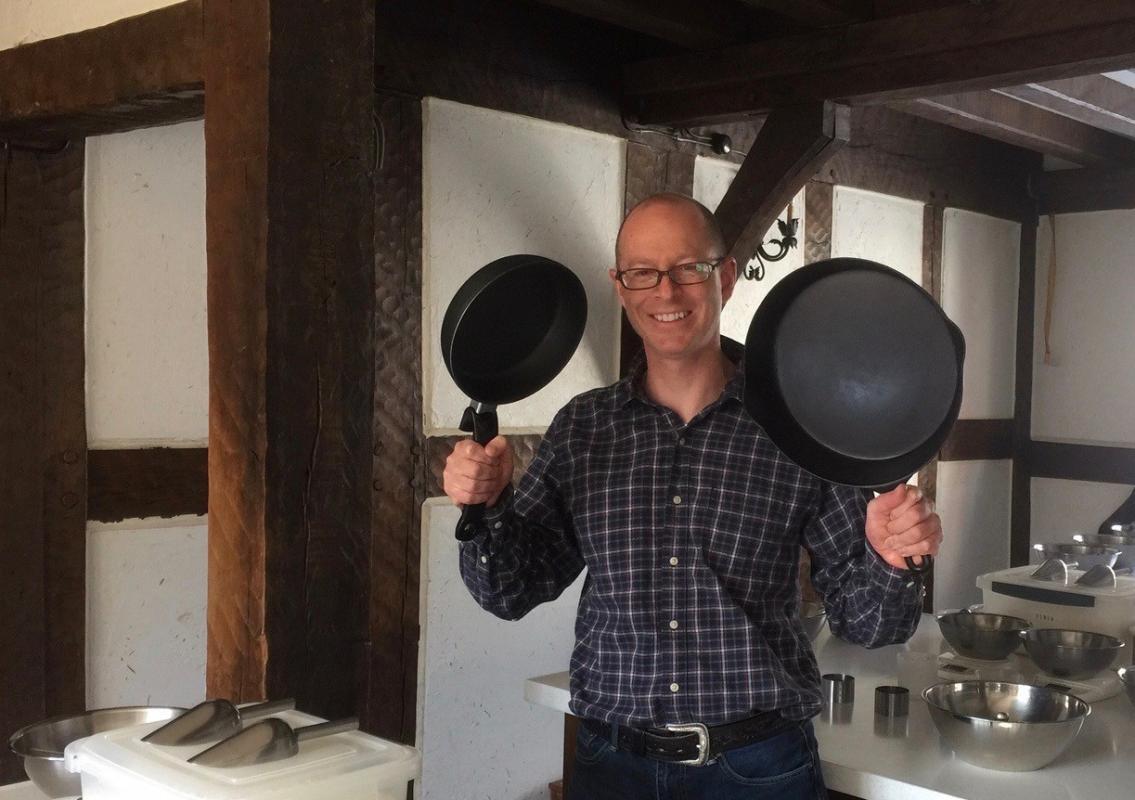
What can you learn from this article?
So let’s get to the root of the debate “is cast iron safe?” In this article, we are going to look in depth at a variety of topics, including:
- What is cast iron cookware made from?
- Is there any evidence to suggest that cast iron cookware might be harmful?
- Are there any health benefits or any reasons cast iron cookware may be harmful?
Hopefully, by answering these questions, you will have a clearer picture of the effects of cast iron. You should be able to make your own conclusions as to whether it’s safe or unsafe to use for yourself or your family. Although I have researched the article carefully I’m not a qualified medical professional. Please consult with your medical practitioner if you have any concerns.
Cookware doesn’t get any more natural than iron.
Let’s take a closer look at iron itself. Now as you can probably guess, cast iron cookware is made out of… yep, you guessed it, iron!
Iron is not a rare metal like gold. In fact, iron covers about 5 per cent of the Earths crust. However, you won’t find large nuggets of iron laying around. Iron is mostly bound in silica rock and sand. Therefore iron requires processing is needed to extract the metal from the sand and rock.
Cast iron cookware is made from 97-98% pure iron.
Iron is very soft as metals go and therefore, don’t make for very sturdy pans. To combat this problem, carbon is added to the pans which harden the material. However, even with added carbon cast iron pans are around 97-98% pure iron. Which also makes it super easy to analyze for the health effects and easy to find out if cast iron cookware is safe to cook with.
Iron is not only a metal it’s also an essential mineral in your body.
Aside from being used for manufacturing steel and cast iron cookware, iron is also an essential dietary mineral. This means it must be obtained through your diet as your body can not make it by itself. Iron has many roles including transporting oxygen around the body, enzymatic reactions. Iron is also an essential component of your immune system [1].
How much iron is recommended?
The recommended daily intakes for iron suggested by the Food and Nutrition Board (FNB) at the Institute of Medicine (IOM) and are stated below in Table 1 [2]. The RDA’s for vegans and vegetarians are 1.8 times higher than those who eat meat as the heme iron from meat has a higher bioavailability than non-heme iron from plant-based foods [1].
Table 1. Recommended Dietary Allowances (RDAs) for Iron.
| Age | Male | Female | Pregnant |
| 14-18 | 11mg | 15mg | 27mg |
| 19-50 | 8mg | 18mg | 27mg |
| 51+ | 8mg | 8mg | N/A |
You may not need cast iron pans if you’re getting enough iron through your diet.
The debate of whether or not cast iron cookware is safe stems from the added iron leached into your food using iron cookware. While some advocate the benefits of adding iron in your diet through using cast iron cookware. Others argue this extra iron may exceed your daily recommended amount. You might to able to get enough iron by eating food rich in this essential mineral without the need cast iron cookware.
Some examples of foods that have high amounts of iron per serving include:
- red meats
- seafood
- breakfast cereals
- dark chocolate
- spinach
- tofu
Iron can also be obtained through dietary supplements with many multivitamins providing 100% or more of the RDA. Is cast iron cookware safe to use? If you are in the camp that cast iron provides a health risk because of the added iron then are supplements dangerous for the same reason?
Are you taking in too much iron?
Iron can be very easily obtained through a balanced diet. However, it is possible to obtain iron in amounts that may harm your health. Those who could be at most risk include:
- those with hemochromatosis.
- adult men who eat a lot of iron-rich foods.
- those who eat a lot of red meat.
- postmenopausal women.
Is cast iron safe since it leaches iron into your food? Iron is so important to your health some countries require food manufacturers to fortify food with iron.
In addition to the variety of food sources that contain adequate amounts of iron, many countries fortify infant formulas, wheat and other flours with iron [4]. So a bowl of breakfast cereal, a multivitamin and red meat a couple of times a week can easily push your daily intake of iron above the recommended amount.
Two simple strategies you can implement that will mitigate this build up. Include cutting down on your red meat consumption (which will also bring a variety of additional health benefits including improved heart health) and including iron-absorption inhibitors in your diet, for example, coffee and phytochemicals [5].
Like anything, too much of a good thing may actually be bad for you. However, there’s good news.
The FNB has established an upper limit of 40mg for iron obtained from food and supplements. This limit is based on the amounts of iron that are associated with gastrointestinal effects following supplemental intakes of iron [2]. Although it is worth noting that adults with normal intestinal function have very little risk of iron overload from dietary sources of iron. If you are concerned about your iron intake, However, please speak to your doctor.
Start using cast iron pans because research has shown that you’re more likely to be deficient in iron.
Young children, premenopausal women, pregnant women, vegans and vegetarians are at risk of obtaining insufficient amounts of iron [6, 7]. Furthermore, over 2 billion people worldwide suffer from iron deficiency or anaemia, making it the most common nutritional deficiency [8].
Research from a National Diet and Nutrition Survey [9] revealed that women aged 11-18 and 19-64 were 46% and 23% under the Lower Reference Nutrient Intake (LRNI), respectively. As a comparison, men of the same age brackets were only 7% and 1% under the LRNI, respectively.
So how does cast iron affect your food?
As well as obtaining iron through your diet it is also possible to increase your iron intake through the use of a cast iron pan, which can be extremely useful for the latter of the aforementioned population groups with minimal additional effort!
To put it into some context: premenopausal women require 18mg of iron per day [8]. A serving of scrambled eggs cooked in a cast iron skillet increased from 1.49 mg to 4.76 mg of iron [10].
Similarly, tomato sauce cooked in a cast iron skillet can provide 5 mg of iron [10], that’s over 60% of the RDA! We’ve actually gone through some more examples below so you get an even clearer picture of how significantly cooking with a cast iron pan can affect food!
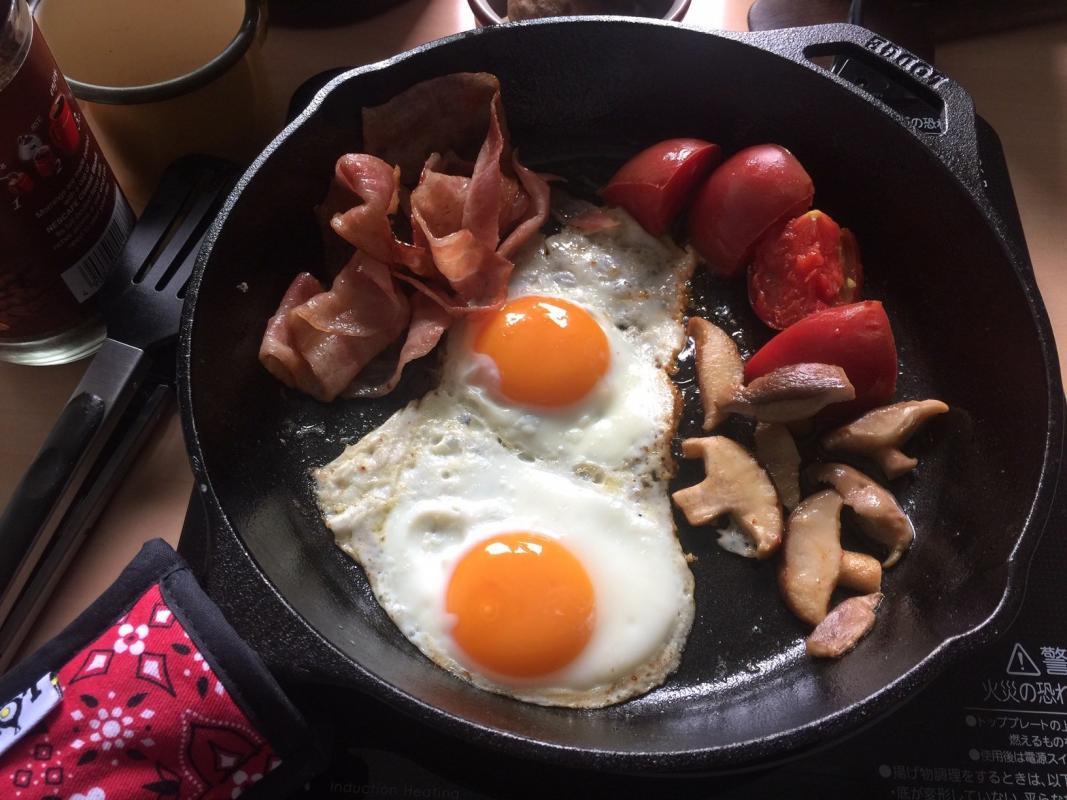
Cooking acidic foods will add more iron to your food than non-acidic foods.
From the example we can clearly see that iron pots and pans can significantly increase the iron content of certain foods like eggs and tomato sauce, but not sure much with others like hamburgers and bacon.
A study published in the July 1986 issue of the Journal of the American Dietetic Association [10] tested the iron content of 20 different food sources before and after cooking in an iron skillet.
The researchers concluded that cooking in an iron skillet greatly increased the iron content of food due to a number of varying factors; acidic foods that have a high moisture content (e.g. apple sauce and tomato sauce), foods that are cooked for longer periods of time versus foods that are cooked quickly (e.g. rice versus hamburgers), foods that were stirred more frequently and foods that were prepared in a newer iron skillet versus an older pan.
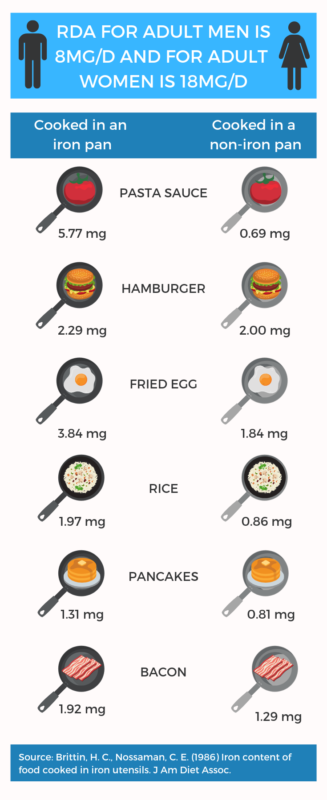
Using a cast iron skillet is a great way to add extra iron to your diet.
This is great news for those of you that want to increase your dietary iron intake especially for those who are at risk of iron deficiency; young children, premenopausal women, pregnant women, vegans and vegetarians. However, I would still recommend you keep your pan well seasoned.
Season your pan to keep your iron intake balanced.
Similarly, if you do want to continue cooking with an iron skillet but want to limit the amount of iron that is leached from your skillet make sure your pan is well seasoned. This will separate your food from bare metal. Don’t worry I will go through this in a bit! [10].
What is a seasoned cast iron pan?
Let’s talk about seasoning your cast iron pan. No, does not refer to sprinkling spices and herbs onto the surface of your pan. Seasoning is a layer of polymerized oil baked onto your cookware.
Seasoning prevents rust however it also separates food from bare metal.
Cast iron pans can rust easily if it’s not protected from moisture. Therefore to prevent this from happening, and to create a non-stick surface, you must season the pan with oil-rich polyunsaturated fats.
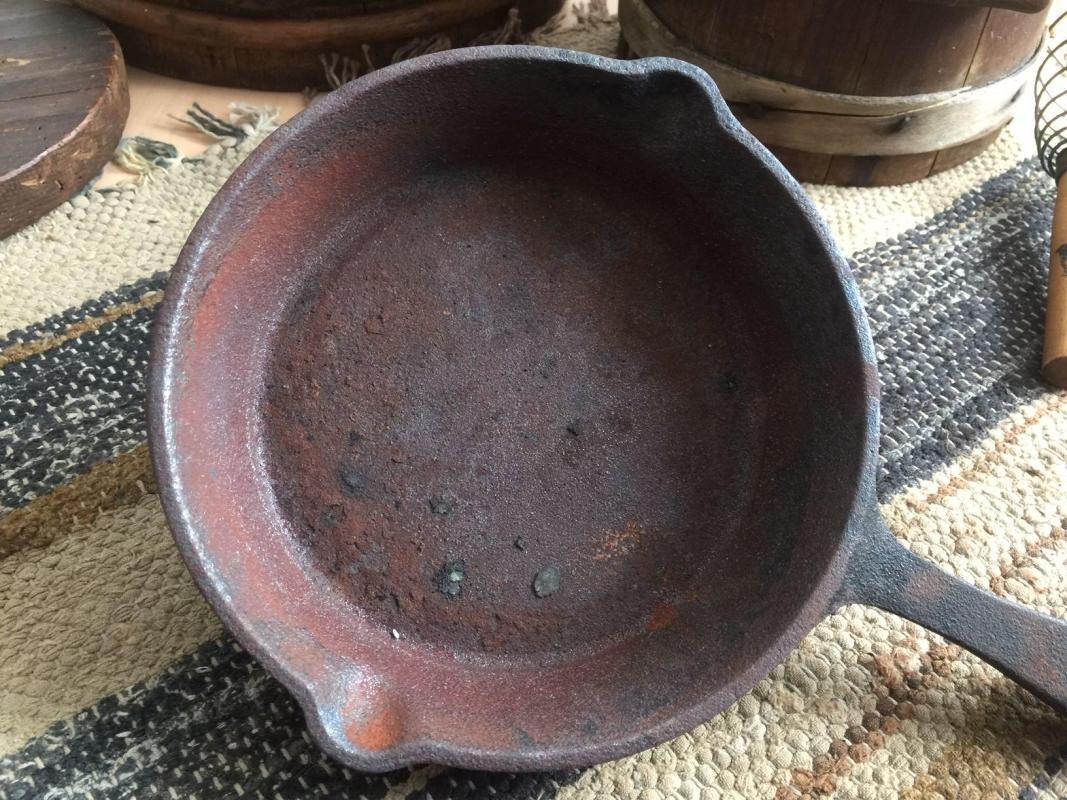
In simple terms, you coat the inner and outer surface of the pan with a largely unsaturated fat, for example, flaxseed oil or grapeseed oil and heat it in a warm oven for a least one hour and ideally repeat this a few times as well as continuing to add layers of seasoning over the course of years.
In not so simple terms, when exposed to high heats unsaturated fats are bonded to the pan. The oil polymerizes into a coating which with further heating carbonizes and hardens. The blackened coating or seasoning is what makes the pan non-stick and adds a layer of protection against the leaching of iron from the cookware into your food.
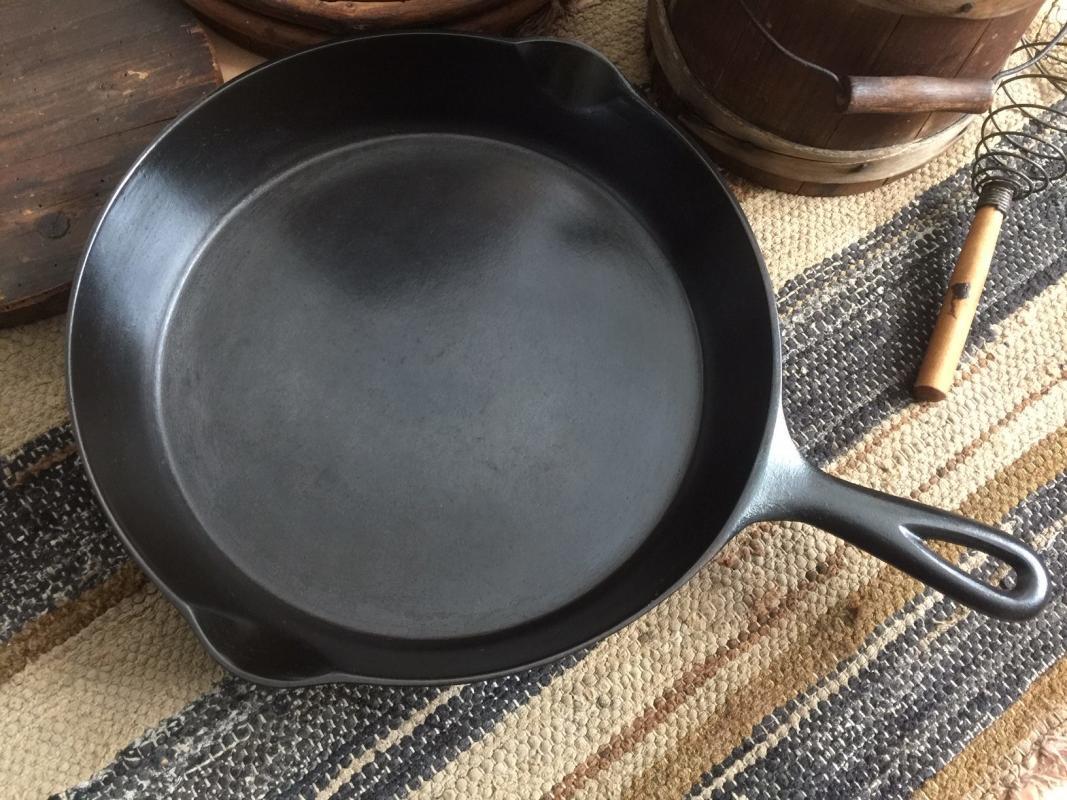
Choose your cast iron wisely and go with a trusted brand.
When choosing your new iron cookware there are a couple of key things you should be on the lookout for to ensure you get the most out of your pan! All iron pans will have slight variations. Vintage or antique cast iron pans are fantastic to use and are still great cookers ever on modern stovetops. Keep an eye out for:
- Griswold
- Favorite Piqua Ware
- Vintage Lodge pans
- Sidney Hollowware
- Wapak Hollowwareh
- Wagner Ware
However, modern cast iron made by reputable companies also make very good trusted cookware. Lodge Manufacturing and Victoria are just a couple of examples.
I’d avoid pans with ridges, pits, seams and jagged edges and lastly, make sure the pan is the same color overall [11].
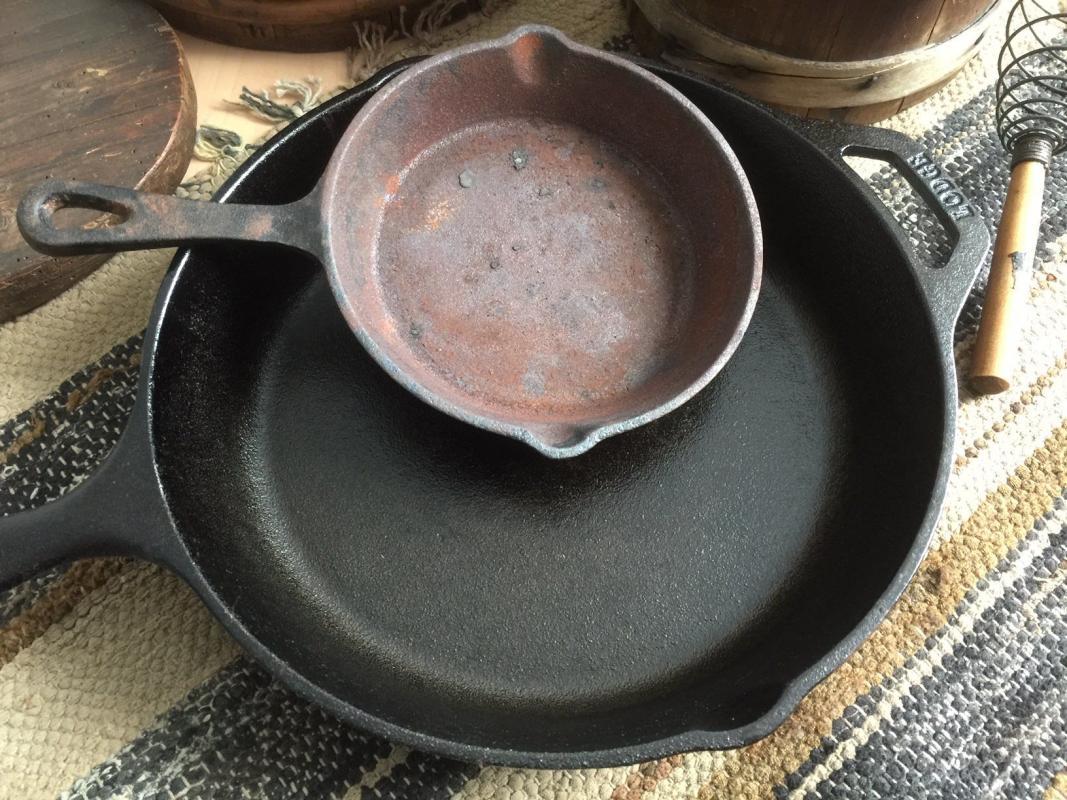
Okay, so what are the other options?
If however, you do choose to stay away from the cast iron pans, there are plenty of alternatives you can choose from such as:
- stainless steel
- stone
- glass
- ceramic cookware
- enameled cast iron
Is cast iron safe? There’s a simple answer, right?
When weighing up the pros and cons of cooking with a cast iron pan it essentially comes down to whether or not you are looking to increase your dietary iron intake. To obtain your baseline iron levels there are options to have your blood ferritin levels tested, either privately or through your doctor.
If you are in one of the groups that are at risk of iron deficiency such as:
- young children
- premenopausal and pregnant women
- vegans or vegetarians
Also if feel you may benefit from the simple method of cooking with cast iron to top up your dietary iron then this could be a great option.
The benefits of cast iron.
Looking at all of the evidence, cast iron has been used safely for thousands of years with no reports of being a health risk. Furthermore the nutritional advantage cast iron provides is just one consideration.
Cast iron is cheap and it can also last lifetime i.e. no more buying non-stick pans again and again once the coating wears off. While not as non-stick as Teflon, cast iron is more nonstick than stainless steel.
Additionally, iron retains heat very well so is great for searing and cooking at high temperatures, so you can even throw it in the oven.
The disadvantages of cast iron.
With benefits, comes drawbacks and with cast iron, the obvious one is the leaching of iron into food. As we have discussed above, this is an advantage for some but a potential safety concern for others, in particular, those with:
- hemochromatosis
- adult men
- regular red meat eaters
- postmenopausal women
If you did want to continue using or introduce cast iron into your cookware, you can implement some simple strategies to overcome this including seasoning your pan very well to reduce the ‘leaching’ effect. Also, avoid cooking acidic food and using metal utensils which may scratch the metal surface.
You can also reduce the amount of red meat you eat and if you take a daily multivitamin, you can opt for an iron-free tablet or one that has a low dose of iron.
Why take iron supplements when you can use a cast iron pan?
In conclusion, whether you choose to cook and think cast iron is safe to cook with is down to personal preference. Hopefully, with the information that I have explored, you will be able to make a balanced decision that has your best interests at heart.
Although we may never find out the true health effects of cooking with cast iron. However, is enough evidence to suggest that there are nutritional advantages for those that may struggle to hit their iron RDA and potential harm to those that obtain enough iron through their diet.
From a nutritional standpoint, you should always strive to reach your iron RDA from your diet alone, however, if this is proving a struggle then including a cast iron pan in your kitchen arsenal is a great option.
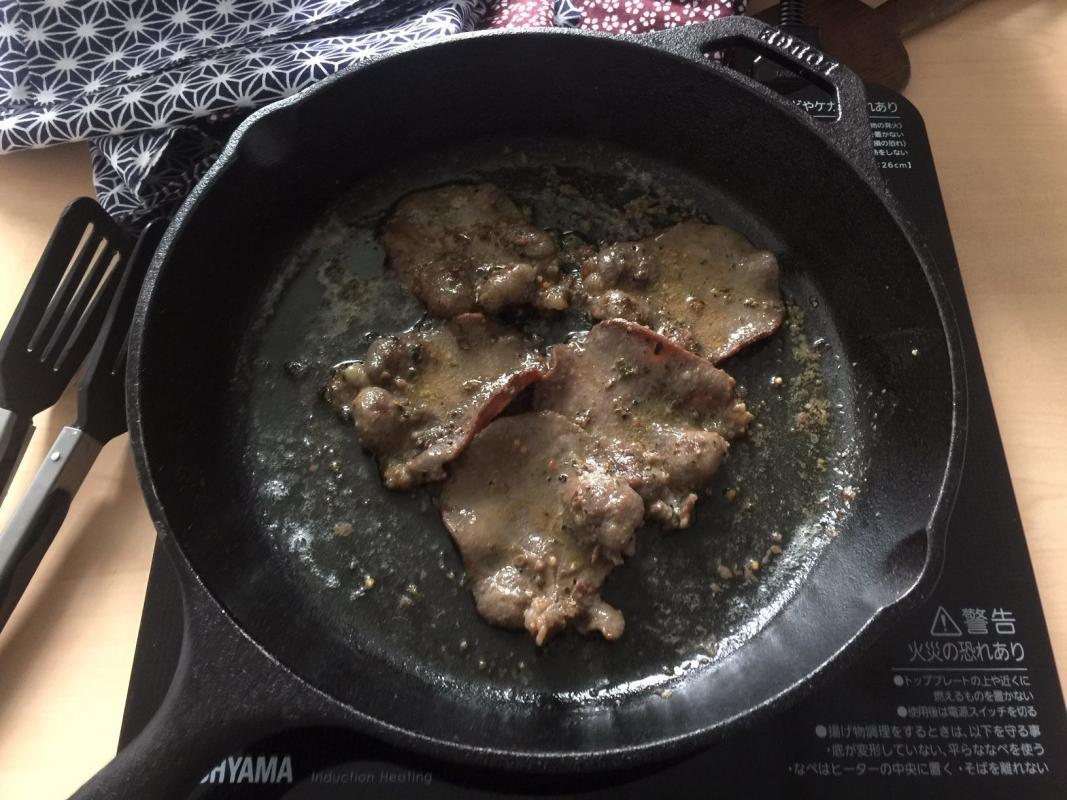
Medical disclaimer: Is cast iron safe to use? Please consult with your local medical professional advice.
This article provides information that should not take the place of medical advice. I encourage you to talk to your healthcare providers (doctor, pharmacist, etc.) about your interest in, questions about, whether or not cast iron is safe to use for your overall health.
References
[1] National Institutes of Health (2018). Iron (https://ods.od.nih.gov/factsheets/iron-healthprofessional/#en13)
[3] Aggett PJ. Iron. In: Erdman JW, Macdonald IA, Zeisel SH, eds. Present Knowledge in Nutrition. 10th ed. Washington, DC: Wiley-Blackwell; 2012:506-20.
[2] Institute of Medicine (2001). Food and Nutrition Board. Dietary Reference Intakes for Vitamin A, Vitamin K, Arsenic, Boron, Chromium, Copper, Iodine, Iron, Manganese, Molybdenum, Nickel, Silicon, Vanadium, and Zinc : a Report of the Panel on Micronutrients. Washington, DC: National Academy Press.
[4] Flour Fortification Initiative. Country Profiles
[5] Brune M, Rossander L, Hallberg L. Iron absorption and phenolic compounds: importance of different phenolic structures . Eur J Clin Nutr. (1989)
[6] U.S. Department of Agriculture, Agricultural Research Service. What We Eat in America, 2009-2010. 2012
[7] Black MM, Quigg AM, Hurley KM, Pepper MR. Iron deficiency and iron-deficiency anemia in the first two years of life: strategies to prevent loss of developmental potential. Nutr Rev 2011;69 Suppl 1:S64-70.
[8] British Nutrition Foundation (2018). Mineral and Trace Elements (https://www.nutrition.org.uk/nutritionscience/nutrients-food-and-ingredients/minerals-and-trace-elements.html?start=8)
[9] National Diet and Nutrition Survey. Results from Years 1,2,3 and 4 (combined) of the Rolling Programme (2008/09-2011/12)
[10] Brittin HC, Nossaman CE. (1986) Iron content of food cooked in iron utensils. J Am Diet Assoc.
[11] Weil, A. (2006). Cooking with Cast Iron? https://www.drweil.com/health-wellness/balanced-living/healthy-home/cooking-with-cast-iron/

